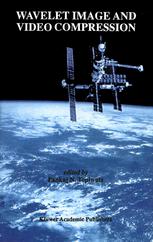

Most ebook files are in PDF format, so you can easily read them using various software such as Foxit Reader or directly on the Google Chrome browser.
Some ebook files are released by publishers in other formats such as .awz, .mobi, .epub, .fb2, etc. You may need to install specific software to read these formats on mobile/PC, such as Calibre.
Please read the tutorial at this link: https://ebookbell.com/faq
We offer FREE conversion to the popular formats you request; however, this may take some time. Therefore, right after payment, please email us, and we will try to provide the service as quickly as possible.
For some exceptional file formats or broken links (if any), please refrain from opening any disputes. Instead, email us first, and we will try to assist within a maximum of 6 hours.
EbookBell Team

4.8
44 reviewsAn exciting new development has taken place in the digital era that has captured the imagination and talent of researchers around the globe - wavelet image compression. This technology has deep roots in theories of vision, and promises performance improvements over all other compression methods, such as those based on Fourier transforms, vectors quantizers, fractals, neural nets, and many others. It is this revolutionary new technology that is presented in Wavelet Image and Video Compression, in a form that is accessible to the largest audience possible.
Wavelet Image and Video Compression is divided into four parts. Part I, Background Material, introduces the basic mathematical structures that underly image compression algorithms with the intention of providing an easy introduction to the mathematical concepts that are prerequisites for the remainder of the book. It explains such topics as change of bases, scalar and vector quantization, bit allocation and rate-distortion theory, entropy coding, the discrete-cosine transform, wavelet filters and other related topics. Part II, Still Image Coding, presents a spectrum of wavelet still image coding techniques. Part III, Special Topics in Still Image Coding, provides a variety of example coding schemes with a special flavor in either approach or application domain. Part IV, Video Coding, examines wavelet and pyramidal coding techniques for video data.
Wavelet Image and Video Compression serves as an excellent reference and may be used as a text for advanced courses covering the subject.